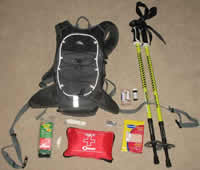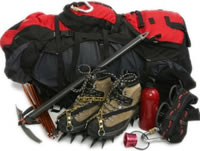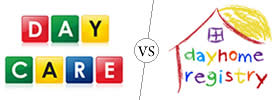Difference between Hiking Gear and Mountain Climbing Gear
Key Difference: Hiking gear and mountain climbing gear are different. Though they may require some things that are the same such as maps, flashlights, first-aid kits and so one, mountain climbing require more equipment as it is a longer journey and is also more dangerous.
Hiking and Mountain climbing are two different outdoor activities and requires different equipment and experience level. Hiking is not as vigorous activity compared to mountain climbing and it is also less dangerous. Mountain climbing is a more demanding activity and requires a person to have a leader or an experience member on the team until one becomes experienced. Hiking and mountain climbing are both done in groups and the groups for hiking can include 2 to as many as possible, while mountain climbing requires at least a medium sized group of 5 or more.
Since these are two different activities they require different equipment.
 Hiking is one-day trip taking walks on trails. Backpacking is hiking that requires more than one day and usually involves camping for the night. Hikers require the following equipment; however, this may change depending on the person’s needs:
Hiking is one-day trip taking walks on trails. Backpacking is hiking that requires more than one day and usually involves camping for the night. Hikers require the following equipment; however, this may change depending on the person’s needs:
- Pocket knife
- First-aid kit
- Flash light
- Maps
- Compass
- Matches and tinder
- Water bottles and canned foods
- Insect repellent
- Sleeping bag (tent not required unless backpacking)
- Mat
- Toilet paper
- Sunscreen, sunblock and sunglasses
 Mountaineering requires more equipment as their journeys are usually longer and can span over weeks. They also require different equipment for the different types of terrain that they may face. Backpacker provides a checklist for a mountaineer’s gear:
Mountaineering requires more equipment as their journeys are usually longer and can span over weeks. They also require different equipment for the different types of terrain that they may face. Backpacker provides a checklist for a mountaineer’s gear:
- Internal frame pack
- Mountaineering boots
- Hinged 12-point crampons
- Mountaineering axe (70cm)
- Climbing harness
- Climbing helmet
- Belay/rappel device
- Prussik slings or mechanical ascenders
- Sewn runners
- Daisy chains
- Avalanche transceiver (optional)
- Avalanche probe (optional)
- Lightweight avalanche shovel (optional)
- Climbing ropes
- Protection hardware (nuts, screws, etc.)
- Ski goggles (optional)
- Glacier glasses
- Convertible or four-season tent
- Down sleeping bag (-30° to 20°F)
- Inflatable sleeping pad
- Closed-cell foam sleeping pad
- Trekking poles
- White gas stove and fuel bottles
- Lighter and waterproof matches
- Cookset
- Eating utensils, bowl, and insulated mug
- Headlamp w/extra batteries and bulb
- Water bottles
- Water treatment (filter, tablets, or drops)
- Pocket knife or multitool
- Compass or GPS (and map)
- Sunglasses
- First-aid kit with personal medications
- Chemical heat packs
- Personal locator beacon (optional)
- Stuff sacks
- Assorted zipper-lock bags
- Bear-bagging rope (or canister)
- Insect repellent (optional)
- Mesh head net or suit
- Sunscreen (SPF 15+)
- Lip balm (SPF 15+)
- Toilet paper and trowel
- Pee bottle
These are basic equipment that is required for a person to go on a hiking or a mountaineering trip.
Image Courtesy: aromaticembrace.com, davestravelcorner.com









Add new comment